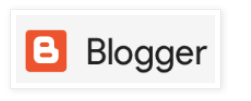Here will show a top-view of a multiple explicit-proxy setup where user groups are defined to grant users access based on the web_profile that's applied.

You could have multiple web_profiles define for various groups .
In the above , we will allow the grade_levels network ranges to the explicit proxies address which happens to be loopbacks.
A firewall policy(s) will be required to allow the networks to the proxy address.
This policy will allow the web_client to use the proxy, all outbound traffic to the internet will be be_blocked, in fact you will NOT need a policy from the loopback address, the fortigate allows this proxy_initiated traffic automatically
1st ( example of a web_client allowances to the web_proxy )
config firewall policy
edit 0
set dstintf "loop1"
set srcintf "LAN1" "LAN2"
set srcaddr "LANNET01" "LANNET02"
set dstaddr "all"
set action accept
set schedule "always"
set service "WEB_PROXY" "PING"
set comments " !!!!!ALLOW EXPLICIT PROXY TO THE CLIENTS school!!!!"
next
edit 0
set dstintf "loop0"
set srcintf "LAN3"
set srcaddr "LANNET03"
set dstaddr "all"
set action accept
set schedule "always"
set service "WEB_PROXY" "PING"
set comments " !!!!!ALLOW EXPLICIT PROXY TO THE CLIENTS school!!!!"
next
end
The above will allow the src_networks to the respective proxy_address. You can assign these address via a GPO for windows clients or statically for others.
Now, that on the loopback interfaces we only need to turn n web_proxy servers
config sys int
edit loop0
set explicit-web-proxy enable
next
edit loop1
set explicit-web-proxy enable
end
The above will allow the web_clients to reach the web_proxy services at the 2 loop-backs.
Now, since we have the policies in place and web_proxy enabled, you can optional configure web_proxy profiles and global settings.
We will now a web_filter profiles, it might be a combination of categories and static_filters.
In order to use a url-filter for explicit proxy , it MUST BE SET as proxy-mode
Now with all of the above you can define explict_firewall policies similar to the following;
config firewall explicit-proxy-policy
edit 1
set proxy web
set dstintf "wan1"
set srcaddr "SCHOOL EDU_NET_RANGE"
set dstaddr "all"
set service "WEB_PROXY"
set action accept
set identity-based enable
config identity-based-policy
edit 1
set schedule "always"
set utm-status enable
set group "proxy_user0"
set webfilter-profile "SCHOOL"
set profile-protocol-options "default2"
set ssl-ssh-profile "certificate-inspection"
next
edit 2
set schedule "always"
set users "proxy_user1"
next
edit 3
set schedule "always"
set group "School_Resource_Group"
next
edit 4
set schedule "always"
set group "K-12students"
set utm-status enable
set webfilter-profile "SCHOOLK12"
set profile-protocol-options "default2"
set ssl-ssh-profile "certificate-inspection"
next
end
next
end
Each Id_Policy rule could be a different authentication type or a method ( local user, RADIUS,LDAP, etc...). Using a RADIUS or LDAP-aaS solution could also be deployed.
For example, you might use a RADIUS-aaS for one group of users, a static user for diagnostics, and the student and faculty body authenticated via MS-AD credentials.
Be aware of the id_rule ordering and what and how a user can authenticate.
The explicit proxy allows for great means for controlling and inspecting user requests. The Fortigate is a simple firewall to execute web_filter from domain and *wildcard syntax matches, plus category based filtering.
Each identity rule could have it's own web_profile to match the web_clients authorizations.
Examples
- police/resource officer has allowance to all site to include social media to investigate threats
- where K-5 has a restrict profile that allows sites that are educational approved or static entries
- 8-12 are allow the same plus any SAT or assessment systems in a static url list
- The Information Team has access to IT sites for upload/downloads, securiy related matter
- Guess uses have basic access for sites deem approved.
To test the proxy I've found chrome launched manually is a great method. You could use a static pac.file or just call up the proxy-server
( launching chrome )
( sample pac.file )
Based on your webfilter category or static URLs and the action you can test for allow or block. based on that user_group and the action allowed for the URL , you will either be allowed or deny. If denied, you will have a response page similar to below.
If you failed AUTHENTICATION, the proxy will provide a login_failure message.



If you do you Chrome, alway check for the proxy settings that the "SYSTEM" has enabled
Ken Felix
NSE ( network security expert) and Route/Switching Engineer
kfelix -----a----t---- socpuppets ---dot---com
^ ^
=( @ @ )=
o
/ \





No comments:
Post a Comment